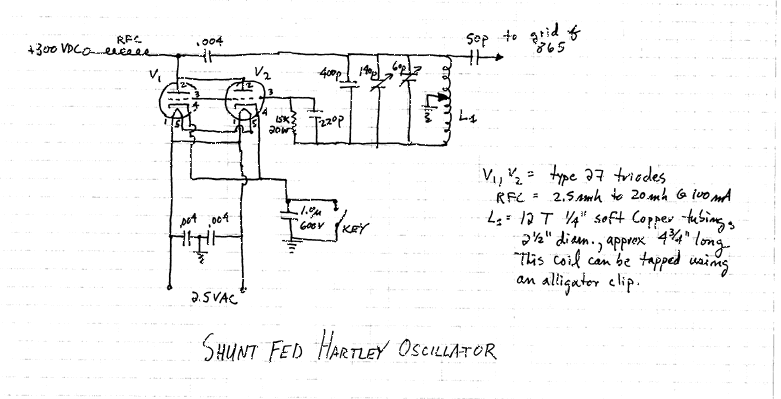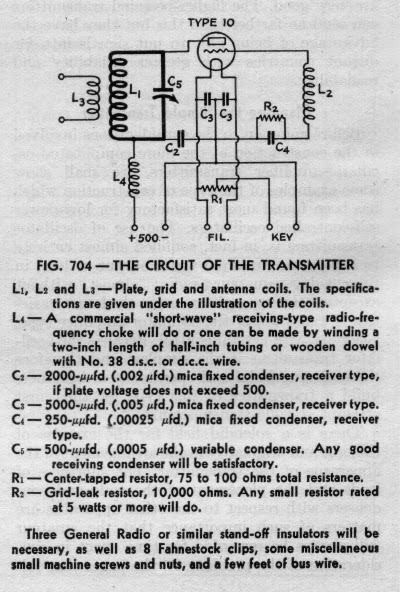 Julian G4ILO has died, sadly
Julian G4ILO has died, sadly
From Julian’s blog:
Julian died yesterday on 24 October in the presence of his wife Olga and two Hospice nurses at home at 19-45 peacefully and painlessly. He will be always loved and always remembered.
See http://onefootingrave.blogspot.co.uk/ .
We all knew this was likely but it saddens me greatly to report this here.
RIP Julian – you brightened our lives and we will all miss you. Olga, our sympathies to you in your great loss. Julian inspired a great many people. He will be remembered for a long time.
I have no details of memorials (flowers, donations, etc.) or funeral arrangements.
Roger Lapthorn, G3XBM, is a regular contributor to AmateurRadio.com and writes from Cambridge, England.
 RIP G4ILO
RIP G4ILO
I have just read on G4ILO's One foot in the Grave Blog, that Julian lost his long battle with his illness yesterday: http://onefootingrave.blogspot.co.uk/
Julian was an inspirational writer, anything new he spotted, purchased, or built, he brought to the forefront of his Amateur radio blog: http://blog.g4ilo.com/ Letting us all know his thoughts and modifications. He tried everything from bargain street kits, Baofeng's to Elecraft, and software writing. He enjoyed his hobby and blogging, which was always written to a very high professional standard.
I am going to miss his regular updates on his blog, because I really enjoyed reading what he had written, and couldn't wait for the next item he was going to write about.
My thoughts and condolances must go to his wife Olga and family.
RIP Juilan Moss G4ILO
Steve, G1KQH, is a regular contributor to AmateurRadio.com and writes from England. Contact him at g1kqh@arrl.net.
 Calibration time
Calibration time
I had been looking at a way of checking calibration of my DMMs on DC, and this useful board will do that for £4. Using an AD584K Precision reference chip, that will output 4 high stab Volts by the flick of a switch:
10.0 V +/- 10 mV
7.5V +/- 8 mV
5.0V +/- 6 mV
2.5V +/- 3.5mV
Figures quoted are for 15V feeding the input of the board
I have seen these on the Internet at various sources, but my link proved to be the cheapest I could find: http://www.banggood.com/AD548-High-Precision-Voltage-Reference-Module-4-Channel-Calibration-p-932160.html
There is also a full spec sheet on the device at the above link.
I will come back to this when I have boxed it up and terminated it for better protection..
Steve, G1KQH, is a regular contributor to AmateurRadio.com and writes from England. Contact him at g1kqh@arrl.net.
 Itch
Itch
I can’t seem to find the time to do something substantial in the shack lately. If I’m there it is usually to tune around a bit, having some QSOs, but mostly lacking enough energy to build or repair something. It happens to us middle aged men, with a busy job, a family and kids to attend to. But I still have this itch to do something radio related and it needs to be scratched.
Luckily I have 10 minutes between the classes I teach and once in a while I get the urge to do something computer related. Now my computer skills are as good as my electronic skills: I don’t know much, but enough to get the job done. And when I get the job done the sense of achievement makes me happy for the rest of the week.
So for the last few days I have been spending those 10 minute breaks on automating the uploading of my logbook to my website. My coding skills are limited to Perl in combination with Linux shell scripts (plus PHP and HTML for the front-end). Luckily I can force myself to be structured, so I started with the sequence I had in mind:
1) retrieve the latest adif archive from CQRlog
2) unzip it and rename it to a standard name
3) read every QSO record into an array and filter out the ones you needs
4) extract the fields from a record and write it out to a HTML file
5) ftp the HTML file to the server
The great thing about Perl is that someone has probably done before what you want to do now. Retrieving the latest file from a directory is standard procedure, so a quick Google search provided some code I had to modify only slightly. Reading an adif file into an array has been done by Ted Pride as you can find here. Thanks Ted, now I only have to write out to a file, which I have done many times before. Easy peasy! Last step is to ftp it to the server, but Perl has an awkward procedure for that, so a bash script takes care of that.
It’s almost like playing with Lego. Take some blocks and build it into something you want. Sounds easy, but it can be frustrating, especially when you don’t understand the code from others, or when you make syntax mistakes. But Google is such a treasure trove of knowledge that you can usually find the answer to your problem very quickly. This time I got stumped by the fact that some code wouldn’t run straight from the command line. One 10 minute break was spend on searching and it turned out to be a new line problem, caused by some code having been written in a Windows environment. Dos2unix took care of that, so my Wednesday morning didn’t end in frustration.
So from now on every visit to the shack will end in running a single shell script which will update the logbook on my site, as well as all the QSO maps plus do a backup of some important files. Saves at least 10 minutes each time and a sore wrist from all those mouse clicks. You can see the result on pa2bx.nl –> Logbook.
Hans "Fong" van den Boogert, BX2ABT, is a regular contributor to AmateurRadio.com and writes from Taiwan. Contact him at hans.bx2abt@msa.hinet.net.
 ’29 Style Transmitters…What To Build? – Part 2
’29 Style Transmitters…What To Build? – Part 2
When it comes to putting a transmitter together for the BK, there are a lot of choices! My advice for a first-build '29 rig would be either a simple TNT or a Hartley-style oscillator. Both are easy to get operating and, when correctly optimized, are capable of putting out a nice-sounding signal.
For a first-time build, with the main objective being to have something ready in time for the December BK, I would not be concerned about overall appearance or period-appropriate parts. For now, the only thing that must be period-appropriate is the tube...improvements can come later.
As well, I would not be overly-concerned about running the maximum power of 10W input. If you are able to get a type '10' or the equivalent VT-25, or a pair of 45's, then the legal-limit is easily within reach. Utilizing something smaller, at just a few watts output, should not be considered a deterrent, as BK-operators all seem to have very good ears. Just 2 or 3 watts will guarantee plenty of contacts no matter where you are located!
Shown above is a fine little TNT built by Kevin, WB2QMY, in New York. It uses a very affordable UX-201A triode, originally manufactured in 1925 for radio receivers. Although Kevin's TNT puts out barely 2 watts on 80m CW, we had no trouble working each other in a recent BK QSO Party. If you build it, they will come!
If you prefer to tackle a TNT, here is the information you will need. This circuit appeared for several years in the ARRL Handbook's transmitter-section. I suspect that it was probably built by thousands of young hams in the late 20's and early 30's and affordably introduced most of them to the magic of radio. For more building details, including how to keep high-voltage off of the main tank coil, see the information on my website describing the TNT project.
Should you be interested in tackling a Hartley, here is an interesting circuit described by Nick, WA5BDU.
 |
| Courtesy: WA5BDU |
Such a transmitter would readily lend itself to a parallel arrangement of two or more triodes, such as the 27 or the 45 and would develop good power levels inexpensively.
ABØCW has designed a Hartley oscillator using a pair of 27's in parallel and uses them to drive a small amplifier. As described on his website, the oscillator would make a fine stand-alone transmitter with a simple link-coupling antenna circuit.
 |
| Courtesy: ABØCW |
You can find a list of '29-style related building links, as well as a gallery of transmitters constructed by others, at the bottom of my TNT web page here.
And....circuit ideas, help with parts and lots of BK-chat can always be found at the Yahoo AWAGroup where the focus is mainly on building and operating.
Steve McDonald, VE7SL, is a regular contributor to AmateurRadio.com and writes from British Columbia, Canada. Contact him at ve7sl@shaw.ca.
 LHS Episode #134: Boxers, For Sure
LHS Episode #134: Boxers, For Sure
 In today’s episode, we have our final listener interview from the Hamvention 2014 Indiegogo campaign that actually ended back in February. Mike Maydaniuk, VA7XXM, was kind enough to donate to our Hamvention ambitions, and now comes on the show to share with us his thoughts on Linux, amateur radio, life, and some random silliness. Hope you enjoy, and please make sure to send us feedback, either via e-mail, social media or voice mail.
In today’s episode, we have our final listener interview from the Hamvention 2014 Indiegogo campaign that actually ended back in February. Mike Maydaniuk, VA7XXM, was kind enough to donate to our Hamvention ambitions, and now comes on the show to share with us his thoughts on Linux, amateur radio, life, and some random silliness. Hope you enjoy, and please make sure to send us feedback, either via e-mail, social media or voice mail.
73 de The LHS Guys
Russ Woodman, K5TUX, co-hosts the Linux in the Ham Shack podcast which is available for download in both MP3 and OGG audio format. Contact him at russ@bluecows.com.
 Amateur Radio Newsline Report 1941 October 24 2014
Amateur Radio Newsline Report 1941 October 24 2014
- Hams in the Philippines to assist in Manila crime watch
- The Sun unleashes an X class flare on October 22
- China launches a ham radio payload to circle the moon
- CQ clarifies policy statement in regard to Crimea in contest scoring
- VA announces plans for its own High Frequency radio network
- Russia plans to launch newly designed smart mini satellites
- How to collect cosmic rays on a smart phone


















